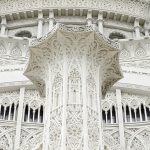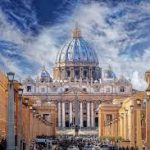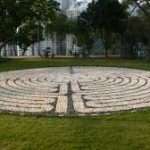1 Sacred Spaces
“Your sacred space is where you find yourself again and again” (Joseph Campbell)
We all live in a specific place on the planet, and where we live impacts, in visible and not so visible ways, the ways that we interact with the world, with other people, and with our internal self. The child raised in prairie or tundra spaces may find the deep forest intimidating or enclosing. The child from the seaside may long for water in ways that the desert dweller may not completely understand.
So the concept of Sacred Space will change from people to people, during history, dependent on location, belief and lifestyle. This unit will attempt to help us think about the concepts that make a space Sacred.
Let’s start with a definition:
According to the Oxford English Dictionary, one of the definitions of the word sacred is:
“b. Dedicated, set apart, exclusively appropriated to some person or some special purpose.”
During the summer of 2010, PBS went on a quest to find sacred spaces in eight cities across America. The results of that journey is a curated selection which appears in their City Guides to Sacred Spaces in Atlanta, Boston, Chicago, New Orleans, New York, Portland, Santa Fe and San Francisco (downloadable at pbs.org/godinamerica/outreach). During this the staff thought long and hard about what it is that makes a space sacred.
Their definition of a sacred space includes the following:
Traditional Sacred Space – A house of worship designed and built for a congregation to
gather, meet and enjoy community for the purposes of worship, liturgy and/or ritual
Civic Sites – engineered structures, secular in nature and scope – usually built by cities, state or government entities
Landscape Sites – sequestered spaces with natural features including water, trees, parkland which encourage quiet meditation and pause
Memorial Sites – markers of an event or person, burial grounds, cemeteries, sites of conscience and memory
Spiritual Places that have been imprinted over time, or have been historically seen as “sacred” a priori – set aside for the public good
EXERCISE
Take some time to consider what you might have in the way of Sacred Spaces in your community. There are likely Traditional Sacred Spaces of some sort. What else can you think of that exists in your community that is a Sacred Space of some sort?
- Go visit a sacred space, preferably one you have never visited before. Take a look at things like layout, façade, intent, function, and form in that space. Can you describe what happens in this space? Can you describe why it is considered “set aside”?
- Read this article from Tricycle, a US Foundation centered on promoting Buddhist views. Sacred Spaces
Religions of the world use varied places and settings for rituals, worship, burial, and other activities. Some of these spaces become more universal in use, as a church or synagogue or mosque might become, in many ways, a community center. AA might meet there, exercise groups gather, pre-schools find housing, clinics, tutoring centers, counseling centers –all of these may use a sacred space as well as the original congregation of people who built it. Some are much more restricted in their use. A monastery is not going to be open to the public, but lived in solely by the Buddhist monks or Catholic monks who dwell there. A labyrinth is limited in use to the walking of it–this is not a park, nor a playground.
Key Takeaway: Creating Sacred Space
Look at how the concept of Sacred and Space come together in this modern example from upstate New York: it’s a response to the Covid pandemic.
Key Takeaways: Sacred Space from the secular
Places become sacred because of their use, their intent, their functions. As we look at various religions, we will be looking at various ways that religions uses particular kinds of spaces. We also will see, in news articles, in research, in social media and in reflections that you create, the ways that spaces become sacred and why they become sacred.
EXAMPLES
There are a vast diversity of Sacred Spaces. You might enjoy visiting some that may not have originally occurred to you as being set aside as somehow sacred:
“God In America.” PBS, Public Broadcasting Service, www.pbs.org/godinamerica/outreach/tour.html.
UNESCO, en.unesco.org/.
“The Buddhist Review – The Independent Voice of Buddhism in the West.” Tricycle, tricycle.org/.
Adams, Beth. “Earth Altars: Sacred Spaces Honor Pandemic Grief, Offer Hope for Future.” WXXI News, Public New New York, 2021, www.wxxinews.org/post/earth-altars-sacred-spaces-honor-pandemic-grief-offer-hope-future.
Deena Winter, Minnesota Reformer July 22. “Quietly, Gradually, George Floyd Square Is Open to Traffic for the First Time since His Murder.” Minnesota Reformer, 22 July 2021, https://minnesotareformer.com/2021/07/22/quietly-gradually-george-floyd-square-is-open-to-traffic-for-the-first-time-since-his-murder/.









